Combination Plate
Sample a variety of Polish dishes on the combination plate: 3 pierogi, cabbage roll, sausage & potato pancake.

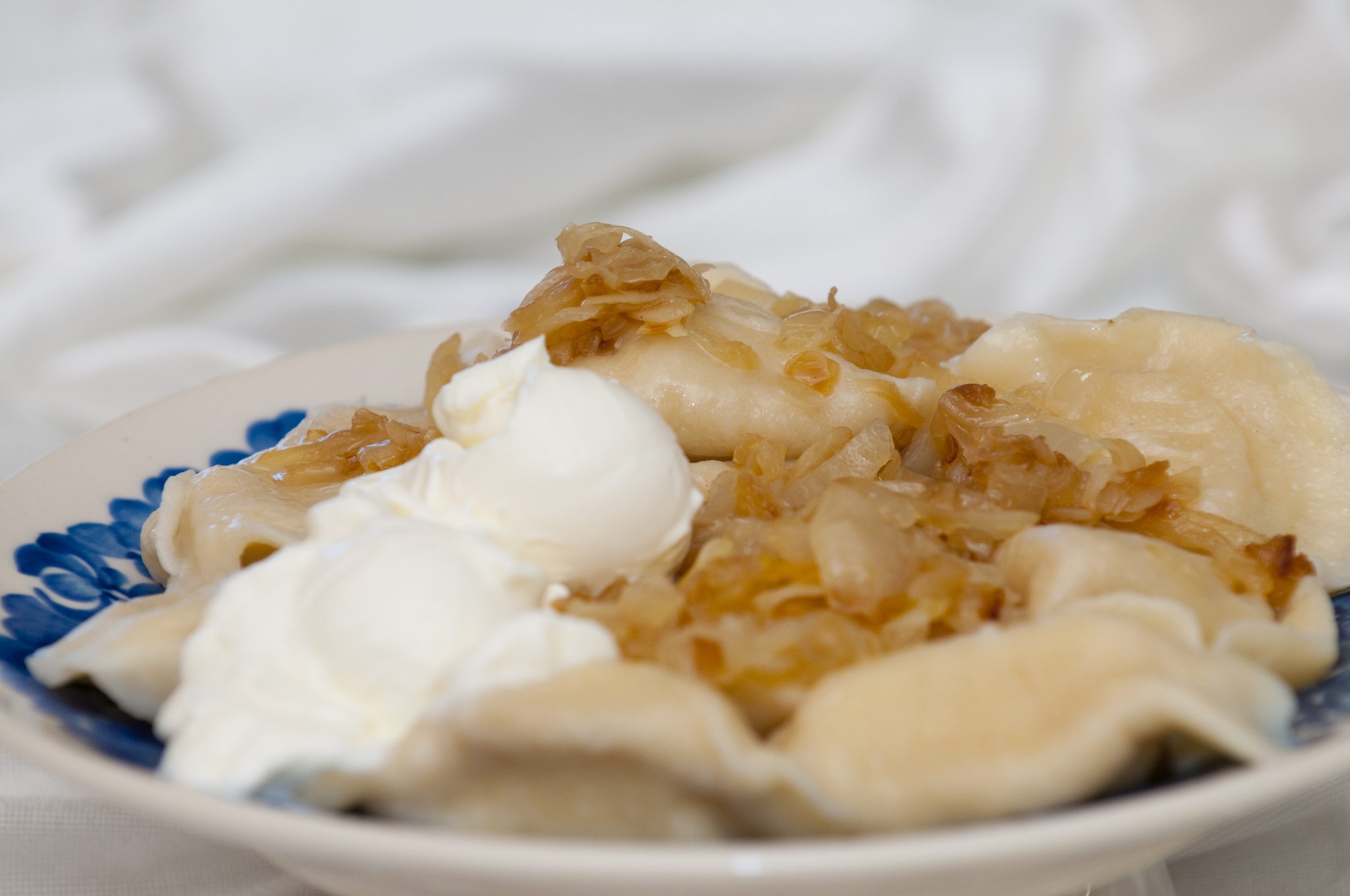
Pierogi Bar
During the Annual Arizona Polish Festival you can try delicious pierogi filled with potato &cheese, sauerkraut & mushroom, or meat, all topped with freshly caramelized onions and melted butter.
Pierogi (pronounced /pɪˈroʊgi/ pi-roh-ghee[1]), also known as varenyky, are filled dumplings of East European origin. They are made by wrapping pockets of unleavened dough around a savory or sweet filling and cooking them in boiling water. These dumplings are popular in Slavic (Polish, Slovak, Ukrainian, Russian), Baltic (Latvian, Lithuanian) and other Eastern European cuisines (such as Romanian) where they are known under local names. Pierogi are especially associated with Poland, Ukraine, Slovakia and Canada where they are considered national dishes.
Pierogi are often semi-circular but triangular and rectangular ones are also found. Typical fillings include potato, sauerkraut, ground meat, cheese and fruits. The dumplings may be served with a topping, such as melted butter, sour cream or fried onion, or combinations of those ingredients.
Pierogi (pronounced /pɪˈroʊgi/ pi-roh-ghee[1]), also known as varenyky, are filled dumplings of East European origin. They are made by wrapping pockets of unleavened dough around a savory or sweet filling and cooking them in boiling water. These dumplings are popular in Slavic (Polish, Slovak, Ukrainian, Russian), Baltic (Latvian, Lithuanian) and other Eastern European cuisines (such as Romanian) where they are known under local names. Pierogi are especially associated with Poland, Ukraine, Slovakia and Canada where they are considered national dishes.
Pierogi are often semi-circular but triangular and rectangular ones are also found. Typical fillings include potato, sauerkraut, ground meat, cheese and fruits. The dumplings may be served with a topping, such as melted butter, sour cream or fried onion, or combinations of those ingredients.
Crepes
At the Annual Arizona Polish Festival you can try sweet cheese-filled crepes served alongside applesauce and/or a medley of fruit.
A crêpe or crepe(naleśniki) is a type of very thin pancake, usually made from wheat flour (crêpes de froment) or buckwheat flour (galettes). The word is of French origin, deriving from the Latin crispa, meaning „curled”. While crêpes are often associated with Brittany, a region in the northwest of France, their consumption is widespread in France, Belgium, Quebec and many parts of Europe, North Africa and the Southern Cone of South America. Crêpes are served with a variety of fillings, from the simplest with only sugar to flambéed crêpes Suzette or elaborate savoury galettes.
A crêpe or crepe(naleśniki) is a type of very thin pancake, usually made from wheat flour (crêpes de froment) or buckwheat flour (galettes). The word is of French origin, deriving from the Latin crispa, meaning „curled”. While crêpes are often associated with Brittany, a region in the northwest of France, their consumption is widespread in France, Belgium, Quebec and many parts of Europe, North Africa and the Southern Cone of South America. Crêpes are served with a variety of fillings, from the simplest with only sugar to flambéed crêpes Suzette or elaborate savoury galettes.

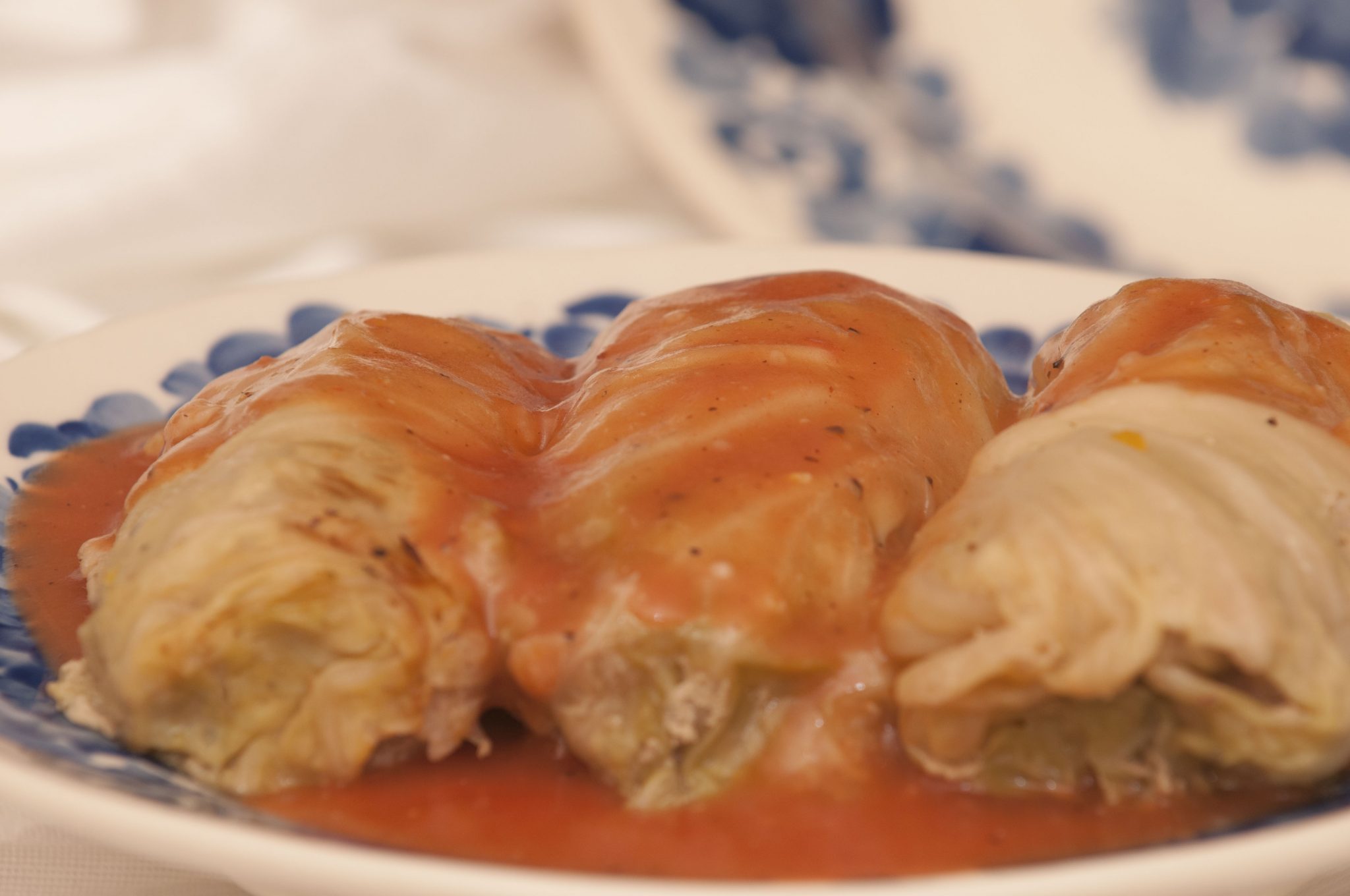
Cabbage Rolls
Cabbage rolls at the Annual Arizona Polish Festival will be stuffed with cooked white rice, ground meat, and (optionally) topped with freshly made tomato or mushroom sauce.
A Cabbage Roll(gołąbki) is a dish consisting of cooked cabbage leaves wrapped around a variety of fillings. It is common to the cuisines of the Balkans, Central, Northern, Eastern Europe, and Iran, as well as West Asia and Northern China.
Meat fillings are traditional in Europe, often beef, lamb, or pork seasoned with garlic, onion, and spices. Grains such as rice and barley, eggs, mushrooms, and vegetables are often included. Pickled cabbage leaves are often used for wrapping, particularly in Southeastern Europe. In Asia, seafood’s, tofu, and shiitake mushroom may also be used. Chinese cabbage is often used as a wrapping.
Cabbage leaves are stuffed with the filling which are then baked, simmered, or steamed in a covered pot and generally eaten warm, often accompanied with a sauce. The sauce varies widely by cuisine. Always in Sweden and sometimes in Finland, stuffed cabbage is served with loganberry jam, which is both sweet and tart. In Eastern Europe, tomato-based sauces or plain sour cream are typical. In Lebanon, it is a popular plate, where the cabbage is stuffed with rice and minced meat and only rolled to the size of cigar. It is usually served with a side of yogurt and a type of lemon and olive oil vinaigrette seasoned with garlic and dried mint.
A Cabbage Roll(gołąbki) is a dish consisting of cooked cabbage leaves wrapped around a variety of fillings. It is common to the cuisines of the Balkans, Central, Northern, Eastern Europe, and Iran, as well as West Asia and Northern China.
Meat fillings are traditional in Europe, often beef, lamb, or pork seasoned with garlic, onion, and spices. Grains such as rice and barley, eggs, mushrooms, and vegetables are often included. Pickled cabbage leaves are often used for wrapping, particularly in Southeastern Europe. In Asia, seafood’s, tofu, and shiitake mushroom may also be used. Chinese cabbage is often used as a wrapping.
Cabbage leaves are stuffed with the filling which are then baked, simmered, or steamed in a covered pot and generally eaten warm, often accompanied with a sauce. The sauce varies widely by cuisine. Always in Sweden and sometimes in Finland, stuffed cabbage is served with loganberry jam, which is both sweet and tart. In Eastern Europe, tomato-based sauces or plain sour cream are typical. In Lebanon, it is a popular plate, where the cabbage is stuffed with rice and minced meat and only rolled to the size of cigar. It is usually served with a side of yogurt and a type of lemon and olive oil vinaigrette seasoned with garlic and dried mint.
Sausage & Sauerkraut
At the Annual Arizona Polish Festival, traditional Polish sausage will be served atop a plate of sauerkraut with a side of fresh Polish rye bread.
Sauerkraut (kiełbasa z kapustą) is finely cut cabbage that has been fermented by various lactic acid bacteria. It has a long shelf life and a distinctive sour flavor, both of which result from the lactic acid that forms when the bacteria ferment the sugars in the cabbage.A sausage is a food usually made from ground meat, often pork, beef or veal, along with salt, spices and breadcrumbs, with a skin around it. Typically, a sausage is formed in a casing traditionally made from intestine, but sometimes synthetic. Sausages that are sold uncooked are cooked in many ways, including pan-frying, broiling and barbecuing. Some sausages are cooked during processing and the casing may then be removed.
Sauerkraut (kiełbasa z kapustą) is finely cut cabbage that has been fermented by various lactic acid bacteria. It has a long shelf life and a distinctive sour flavor, both of which result from the lactic acid that forms when the bacteria ferment the sugars in the cabbage.A sausage is a food usually made from ground meat, often pork, beef or veal, along with salt, spices and breadcrumbs, with a skin around it. Typically, a sausage is formed in a casing traditionally made from intestine, but sometimes synthetic. Sausages that are sold uncooked are cooked in many ways, including pan-frying, broiling and barbecuing. Some sausages are cooked during processing and the casing may then be removed.
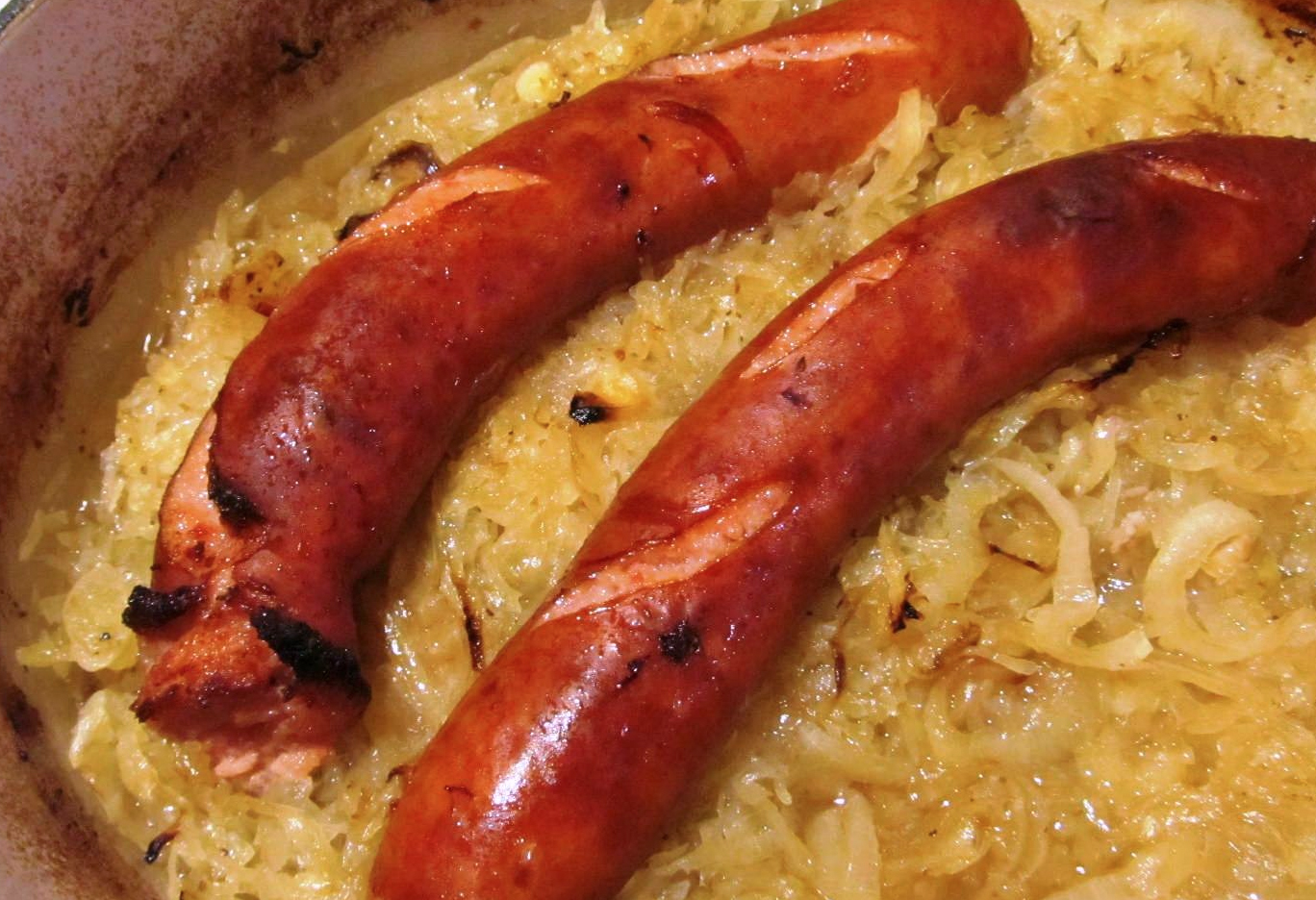
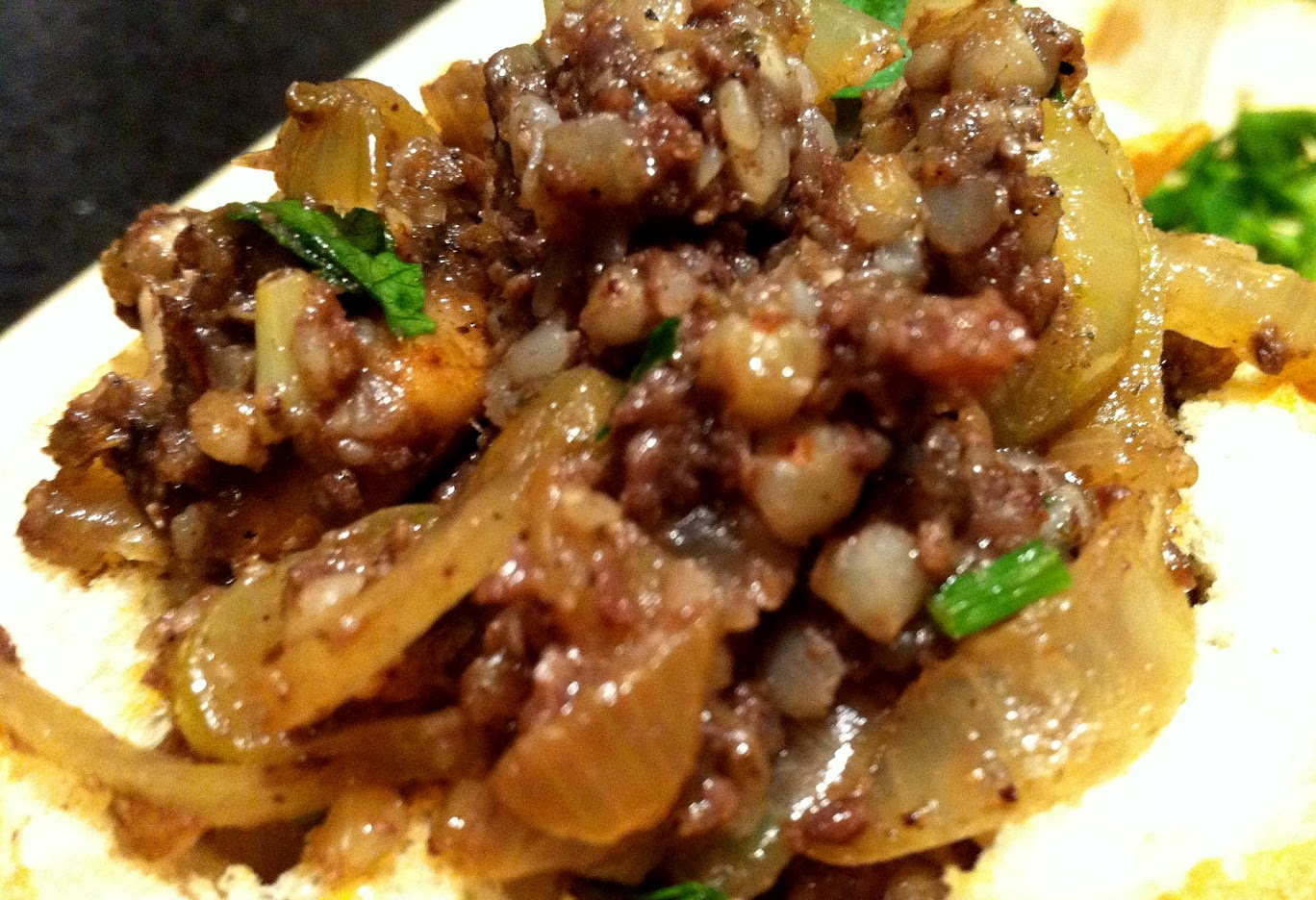
Buckwheat Sausage
At the Annual Arizona Polish Festival, our traditional buckwheat sausage will be prepared and served warm with a side of fresh Polish rye bread.
Buckwheat Sasuage (kaszanka) is a traditional blood sausage in east and central European cuisine. It is made of a mixture of pig’s blood, pork offal (commonly liver, lungs, skin, and fat), and buckwheat (sometimes barley or rice) kasza stuffed in a pig intestine. It is usually flavored with onion, black pepper, and marjoram. Kaszanka may be eaten cold, but traditionally it is either grilled or fried with some onions and then served with potato and sauerkraut.
Buckwheat Sasuage (kaszanka) is a traditional blood sausage in east and central European cuisine. It is made of a mixture of pig’s blood, pork offal (commonly liver, lungs, skin, and fat), and buckwheat (sometimes barley or rice) kasza stuffed in a pig intestine. It is usually flavored with onion, black pepper, and marjoram. Kaszanka may be eaten cold, but traditionally it is either grilled or fried with some onions and then served with potato and sauerkraut.
Potato Pancakes
At the Annual Arizona Polish Festival, you will have the opportunity to top your crispy potato pancakes with applesauce or sour cream, to enjoy as either a sweet or savory dish.
Potato pancakes are shallow-fried pancakes of grated or ground potato, flour and egg, often flavored with grated garlic or onion and seasoning. Potato pancakes may be topped with a variety of condiments, ranging from the savory (such as sour cream or cottage cheese) to the sweet (such as apple sauce or sugar).
Potato pancakes are shallow-fried pancakes of grated or ground potato, flour and egg, often flavored with grated garlic or onion and seasoning. Potato pancakes may be topped with a variety of condiments, ranging from the savory (such as sour cream or cottage cheese) to the sweet (such as apple sauce or sugar).
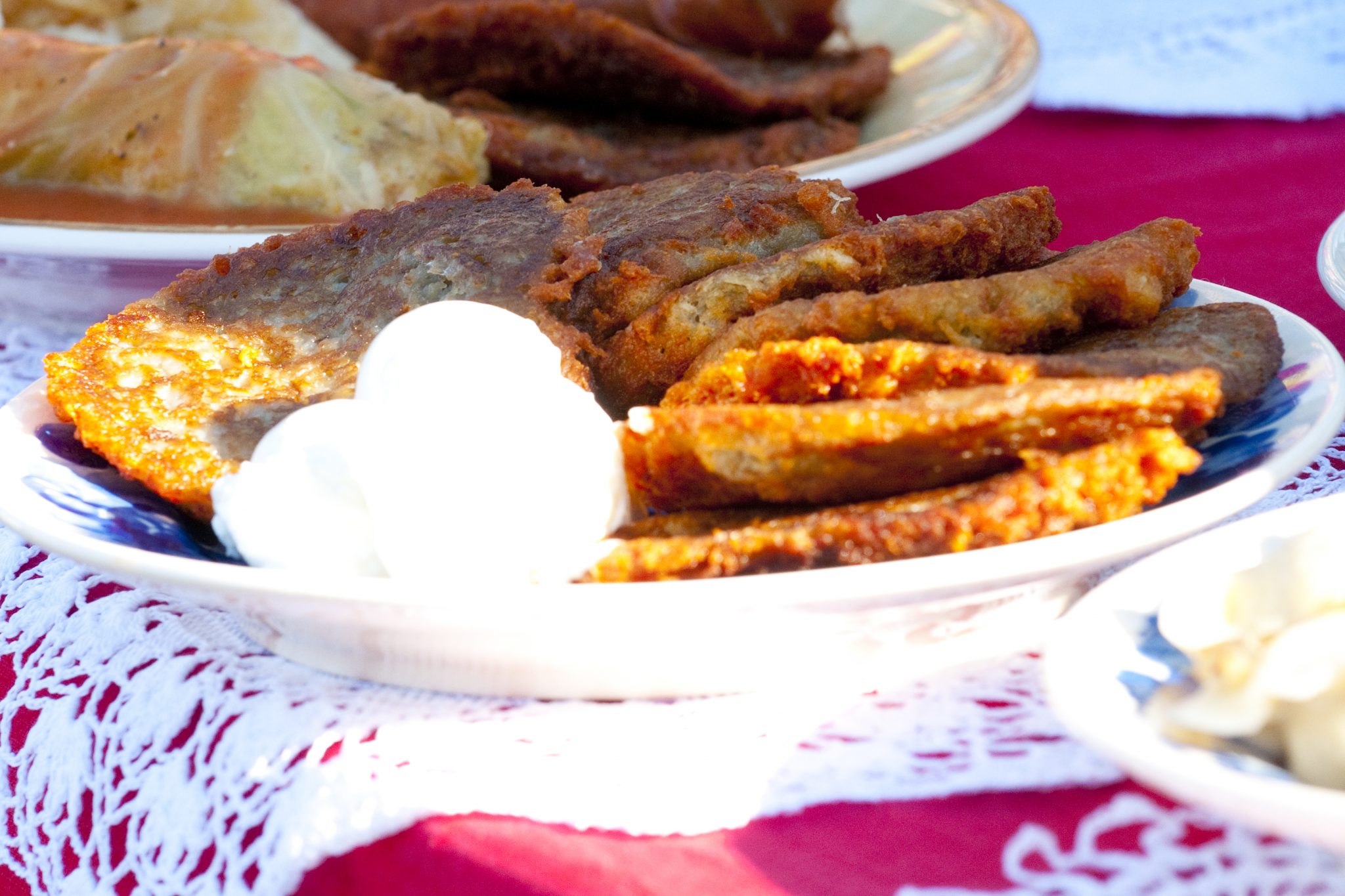

Polish Beer
Żywiec
Żywiec Brewery is one of the largest breweries and beer producers in Poland. Founded in 1856 in the town of Żywiec, the brewery manufactures pale lager. A perfect pairaing for Polish cuisine. It can stand up to any sasuage…This beer is more than OK, it is delicious!
Żywiec Brewery is one of the largest breweries and beer producers in Poland. Founded in 1856 in the town of Żywiec, the brewery manufactures pale lager. A perfect pairaing for Polish cuisine. It can stand up to any sasuage…This beer is more than OK, it is delicious!
Beverages
During the Annual Arizona Polish Festival you will be able to buy:
- Coffee
- Hot tea
- Bottled water
- Soft drinks


Cakes and pastries
During the Annual Arizona Polish Festival you will can try delicious Polish cakes and pastries:
- Paczki (Polish jam-filled donuts)
- Chrusciki (Deep-fried pastry dusted with powdered sugar)
- Kolaczki (Flaky, buttery cookies topped with jam)
- Makowiec (A dense pastry filled with a poppy seed spread)
- Sernik (European style cheesecake)
- Jablecznik (European style apple cake)
Enjoy!

